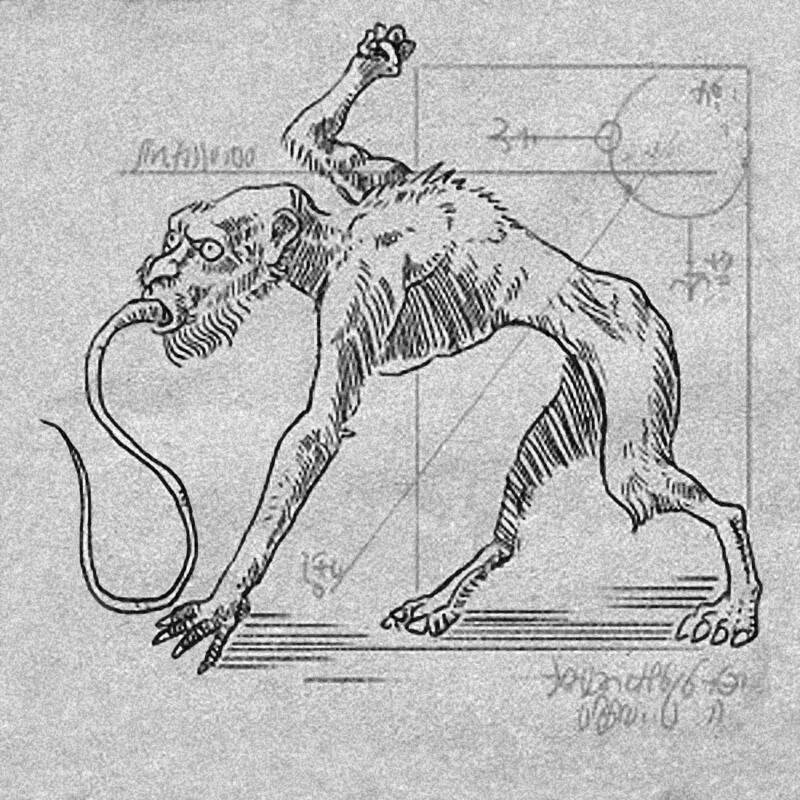According to Filipino folklore, the aswang combines the most terrifying traits of vampires, were-beasts, and witches into a single monster that inspires crippling fear to this day.

CPA Media Pte Ltd/Alamy Stock PhotoAn artist’s rendition of an aswang, a vampire-like mythical creature in Filipino folklore.
In the Philippines, a mythical creature called the aswang combines the horror of a shapeshifter with the most fearsome traits of vampires and werewolves — making this monster the most feared in all of the region’s folklore.
The word aswang actually refers to a range of mythological monsters from were-dogs, to vampires, to a gruesome “viscera sucker.” All can change their appearance at will, however — and all hunger for human flesh and blood. At night, it is rumored to prowl villages, using deceptive sounds to confuse its prey. With its backward feet and bloodshot eyes, the aswang’s unsettling appearance is as terrifying as its hunger for human flesh.
Stories of the aswang have been passed down for centuries, with written accounts dating back to the 16th century when Spanish colonizers recorded the creature in the Doctrina Christiana. The aswang comes in various forms, such as the bird-like Tik-tik and the man-eating Manananggal, which can split its body and fly.
Meanwhile, some historical evidence suggests that fear of the aswang was used by the Spanish to suppress native spiritual leaders, and even the CIA capitalized on the legend during the Cold War.
Real-world explanations for the aswang include misidentified animals, genetic diseases like XDP that cause extreme physical contortions, or a cultural scapegoat for tragedies. Whether as a symbol of fear or a supernatural villain, the aswang continues to be one of the most feared monsters in Filipino folklore.
What Is The Mythical Aswang, Vampiric Monster Of The Philippines?

Wikimedia CommonsAn artist’s sketch of a “viscera sucker” aswang.
The trickiest thing about an aswang is that it often disguises itself as a human during the day. It prowls out in the open, looking for victims among the humans it interacts with. Considered to be part vampire, part witch, and part “werebeast,” the idea that the aswang could be walking among you without your knowledge is one of the scariest things about the creature.
That, and the fact that its favorite meal is human flesh — primarily that of children and unborn fetuses. It has an affinity for the liver and heart in particular. The aswang allegedly has a proboscis-like tongue it uses to suck out blood, even using it to suck unborn babies out from their mother’s womb.
At night, the aswang stalks small villages in the Philippines, looking for its next meal. The aswang likes to confuse its prey with a tricky sound similar to a repeated “tick.” As it gets closer, it gets quieter to fool you into thinking that the creature is getting further away, luring you into a sense of false relief.
You may not know when you’re near an aswang during the day since it is at its weakest state at that time. They are unlikely to attack their victims in broad daylight.
As far as the creature’s physical appearance, believers stated that it often takes the form of a beautiful young woman with long black hair. However, there are tell-tale physical signs that the midnight rendezvous with a gorgeous woman may not be as it seems.
Aswangs have bloodshot eyes and their feet are often flipped backward. They reportedly hate loud noises and bright lights. If you manage to get a good look at their eyes, your reflection will be upside down. Supposedly, another common way is that albularyos oil, a common herbal remedy in the Philippines, will boil whenever an aswang is near.
Chilling Stories Of The Aswang Date Back Centuries

BASE Entertainment/NetflixA depiction of an aswang attack from the television series Trese.
There are allegedly three varieties of aswang. The Tik-tik or Wak-wak is named for the sound it makes while hunting and turns into a large bird. The Sigbin or Zigbin appears as something similar to a Tasmanian Devil. The third variety is the Manananggal, which looks like a woman who can split itself in half and fly like a bat.
In 2023, residents of Talisay, Philippines reported seeing a Manananaggal perched on a house, according to CDN. It frightened some townsfolk enough to call the police and even seek counseling following the encounter.
As described, the night appears to be the time when aswangs are strongest, gaining superhuman strength. They shapeshift and change the appearance of other objects to trick humans.
When they take a victim, they supposedly can use an inanimate object to create a doppelganger, which then quickly becomes sick and dies to avoid discovery.
Origins of the aswang go back to the 16th century when the Spanish conquerors first recorded stories in writing. Juan de Plasencia, a 16th century missionary in the Philippines described these beliefs in the Doctrina Christiana, the first published book in the Philippines.
“The distinctions made among the priests of the devil were as follows: the eighth they called osuang, which is equivalent to ‘sorcerer;’ they say that they have seen him fly, and that he murdered men and ate their flesh.
The second [aswang] they called mangagauay, or witches, who deceived by pretending to heal the sick. These priests even induced maladies by their charms, which in proportion to the strength and efficacy of the witchcraft, are capable of causing death. In this way, if they wished to kill at once they did so; or they could prolong life for a year by binding to the waist a live serpent, which was believed to be the devil, or at least his substance. This office was general throughout the land.”

Public DomainThe 1593 Doctrina Christiana, one of the first books ever published in the Philippines, which contains a description of the aswang.
Stories of the aswang could stem as far back as the 13th century, when Malay people came to the Philippines and brought with them their supernatural beliefs. Their folklore referred to a creature similar to the aswang called the Penanggal. These monsters allegedly also appeared as normal women during the day but had long tongues and fed on mothers and unborn children at night.
The Spanish conquerors of the 16th century noted that the people feared the aswang the most — but they may have been the ones pushing fear of the monster themselves for their own gain.
They attached it to babaylans, who were female spiritual leaders, in an effort to push Christianity. They also attached the monster to women who protested against them when they arrived, so they could squash political resistance.
This Mythical Monster Becomes A Weapon For The CIA

University of MichiganLuis Taruc (right), rebel leader of the Huks and founder of the communist struggle in the Philippines, surrenders to Maj. Gen. Vargas in 1954.
According to Esquire, the Central Intelligence Agency (CIA) also took advantage of fear of the aswang in the Phillipines at the height of the Cold War, adding to its long repertoire of bizarre covert operations.
At the time, the CIA was desperately trying to subvert communist rebels in the country. Edward Geary Lansdale, an advertising executive turned CIA operative, concocted a plan to convince Filipinos that communist forces were in league with aswangs.
According to William Blum, author of Killing Hope: U.S. Military and CIA Interventions Since World War II, one of Lansdale’s ideas included flying over communist-controlled areas while broadcasting “mysterious curses” in Tagalog to anyone in support of the rebel forces. “The tactic reportedly succeeded in starving some Huk units into surrender,” Blum wrote.
CIA agents also drew a cryptic symbol they called “the eye of God” on suspected communist sympathizers. However, their most egregious tactic involved killing communist rebels, piercing their necks to look as though an aswang attacked them, and leaving their bodies on trials for villagers and other rebels to find.
“When the Huks returned to look for the missing man and found their bloodless comrade, every member of the patrol believed that the asuang had got him and that one of them would be next if they remained on that hill. When daylight came, the whole Huk squadron moved out of the vicinity,” Lansdale stated.

Public DomainEdward Geary Lansdale, the man responsible for creating the CIA aswang project.
“My orders were plain,” Lansdale later said about the operation. “The United States government wanted me to give all help feasible to the Philippine government in stopping the attempt by the Communist-led Huks to overthrow that government by force. Early on, I realized that psywar had a wider potential than that.”
Is There Any Evidence That The Aswang Is Real?

Public DomainArtist’s rendition of the Manananggal, a winged type of aswang.
Given that aswangs are believed to be shape-shifters, animals often were assumed to be aswangs in a more terrestrial form. The sounds that are described as belonging to aswangs could very easily be birds. Animals such as the Tasmanian devil, bat, and kagwang (a flying lemur) have all been killed because they were thought to be aswangs in another state.
Another possibility is a rare genetic disease, which primarily affects Filipino men called XDP. This disease causes uncontrollable muscle spasms, tremors, and contortions. Photographs of people experiencing these symptoms are similar to some depictions of aswangs. The original home of the aswang is rumored to be the Capiz region, which also has the highest concentration of XDP cases.
Another possibility is that the aswang is the scapegoat for people who commit brutal murders. For people to blame a monster is often easier than reconciling the fact that a fellow human could commit a heinous act. The tabloids feed into it by attributing crimes to aswangs to boost their sales, but it also keeps the narratives alive. They have also been used to explain stillbirths and miscarriages in the Philippines.
Whether a story to control people or a monster to be feared, the aswang is something truly something out of humanity’s darkest nightmares.
After reading about the aswang, read about another terrifying creature, the Chupacabra. Then, about the scariest mythological creatures.





